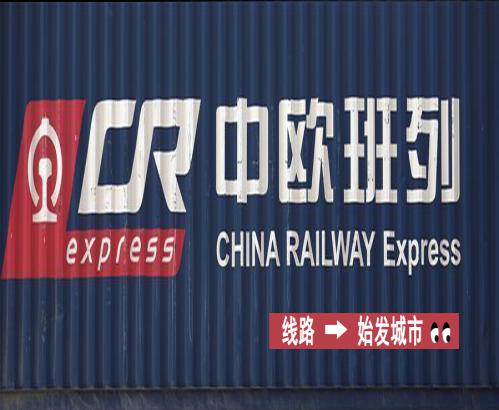Freight tendering as we know it will be gone by 2025
It has been a remarkably challenging year in logistics. Not only has the pandemic sent major shockwaves through supply chains, shipping networks and ports, the industry has also had to contend with Brexit and the blocking of one of the world’s busiest shipping routes. Having built supply chains solely to minimise operating costs rather than considering the risk implications, it has highlighted a lack of preparedness and for many it has served as a major wakeup call.
Businesses must now ensure they are better placed to identify, assess and mitigate against risk in the future. This may mean strategic changes to their supply chains, such as shifting to nearshoring or reverting to multi-tier. But for an industry that is still largely reliant on manual processes, it also requires a major reboot of systems and processes to give businesses the agility they need to adapt quickly and effectively. And they must do all of this while controlling costs and finding new efficiencies.
Having historically taken a ‘wait and see’ approach to deploying new technologies, digitisation is now accelerating. According to Allied Market Research, the global market for supply chain management software and services is set to jump to $37.41 billion by 2027, more than doubling from $15.85 billion in 2019. No wonder then that technology investors are eyeing up the sector with a record $52bn of funding for logistics tech in 2020.
One area of logistics that is in need of an overhaul is freight procurement. Like many other pieces of the logistics jigsaw, the high level of fragmentation and unique complexity of the sector have prevented any major change. Indeed, the freight procurement process has barely evolved in two decades with much of the industry still reliant on Excel to source and analyse freight rates from carriers. With multiple modes, varying capacities, innumerable regulatory requirements and varying rate structures and surcharges, freight tenders are difficult to navigate and can take months to complete.
But this archaic process costs much more than time and resource. With the considerable complexity and admin burden of freight tenders, it is difficult for logistics teams to move quickly and respond to movements in freight rates or disruptions in shipping lanes. With data sitting dormant in spreadsheets, businesses also have very limited visibility. They do not know how their suppliers are performing or how exposed they are to any particular carrier, shipping lane or region. Indeed, without the data it is difficult to assess the impact of disruptions or the benefits of making strategic changes to their supply chain. And it is even harder to make any useful predictions or forecasts.
Businesses are increasingly recognising that the traditional freight tendering process is no longer fit for purpose and digitisation is rapidly gaining momentum. Forward-thinking organisations are already eliminating the most time-consuming tasks and moving to a more regular tendering cadence thanks to algorithm-driven processes and vastly improved workflows. They are also expanding their carrier networks and using mini-bids to react quickly to available capacity, resolve problematic shipping lanes or respond to significant rate variations or fluctuations.
Meanwhile on the carrier side, the larger transportation companies are also digitising processes to optimise their workflows and develop data-driven sales strategies. The most advanced suppliers such as Maersk are already insisting that shippers use digital platforms for rate requests to eradicate manual processes and centralise their data.
In fact, the traditional freight tendering process may soon be obsolete as it evolves further from mini-bids to real-time bidding. With shippers, freight forwarders and carriers all residing together on the same digital platform, the opportunity for efficient and transparent data exchange will be vastly improved.
Machine-learning algorithms will then allow platforms to develop an understanding of all the key factors in buying decisions for each individual business. By continuously analysing the freight market and tracking the performance of carriers, platforms will intelligently propose best-case scenarios to logistics teams as rates fluctuate or as capacity becomes available. The opportunity for shippers and freight forwarders to cut costs and improve margins with semi-autonomous bidding is huge.
By leveraging historical data, predictive freight procurement will also be able to forecast how disruptions in ports or shipping lanes will affect the freight market and how businesses should respond. Similarly, it will also be able to assess the impact of changes to the supply chain in terms of transportation costs and transit times. As such it will become invaluable in helping businesses to run scenario-planning and manage risk.
While automating tasks and digitising processes will eliminate much of the administrative burden, logistics procurement managers will be expected to deliver additional value from any investments in technology. As well as developing carrier partnerships and finding new efficiencies through consolidated buying or consolidated containers, they will be well placed to help organisations secure competitive advantage through greater agility and resilience.
Christian Wilhelm is CEO of Shipsta, a software company specialised in the development of intelligent software solutions for digital and smart purchasing of logistics
- Geodis buys US freight broker Velocity Transport
- Box cargo shifts to bulk vessels to find affordable capacity
- Maersk resumes Yantian calls as nearby ports remain under pressure
- New system launched for first- and last-mile cargo tracking for forwarders
- Egypt agrees to release Ever Given from Suez Canal
- Culina buys Eddie Stobart owner GreenWhiteStar
-
1
达飞航运公告
法国航运业巨头达飞轮船于1月2日发布公告,宣布自1月15日起,将对亚洲至地中海基本港...
-
2
地中海航运公告
MSC NOTICE – INDIA Cargo Manifest and Transhipment Regulations - 7th UPDATE...
-
3
达飞轮船公告
(更新1)MEX航线CMA CGM JULES VERNE轮0MEI5W(0MEI5W1MA)航次开航及相关操作时间调整通...
-
4
ONE新增中国华南地区至越南V...
海洋网联船务(Ocean Network Express,简称ONE)欣然宣布推出全新的中国华南地区至越...
-
5
达飞轮船公告
WAX航线MAERSK ENSHI轮422W(0WWI5W1MA)航次开航及相关操作时间调整通知(UP3)...
-
6
马士基航运公告
马士基表示:“可以确认集装箱船“DALI”为Grace Ocean所有,由Synergy Group运营。...
-
7
马士基航运公告
5月5日,丹麦航运巨头马士基在官网发布了通知,关于土耳其与以色列暂停贸易相关进出口...
-
8
达飞航运公告
2月28日,达飞官网发布关于红海运营的最新公告,达飞集团已经重新评估了红海南部地区...
-
9
达飞轮船公告
FAL8航线EVER MEED轮0716001W(0SCF5W1MA)航次开航及相关操作时间调整通知(UPDATE 1)...
-
10
达飞轮船公告
ACSA1航线NORTHERN DEMOCRAT轮1MHS8E(1MHS8E1MA)航次开航及相关操作时间调整通知...

